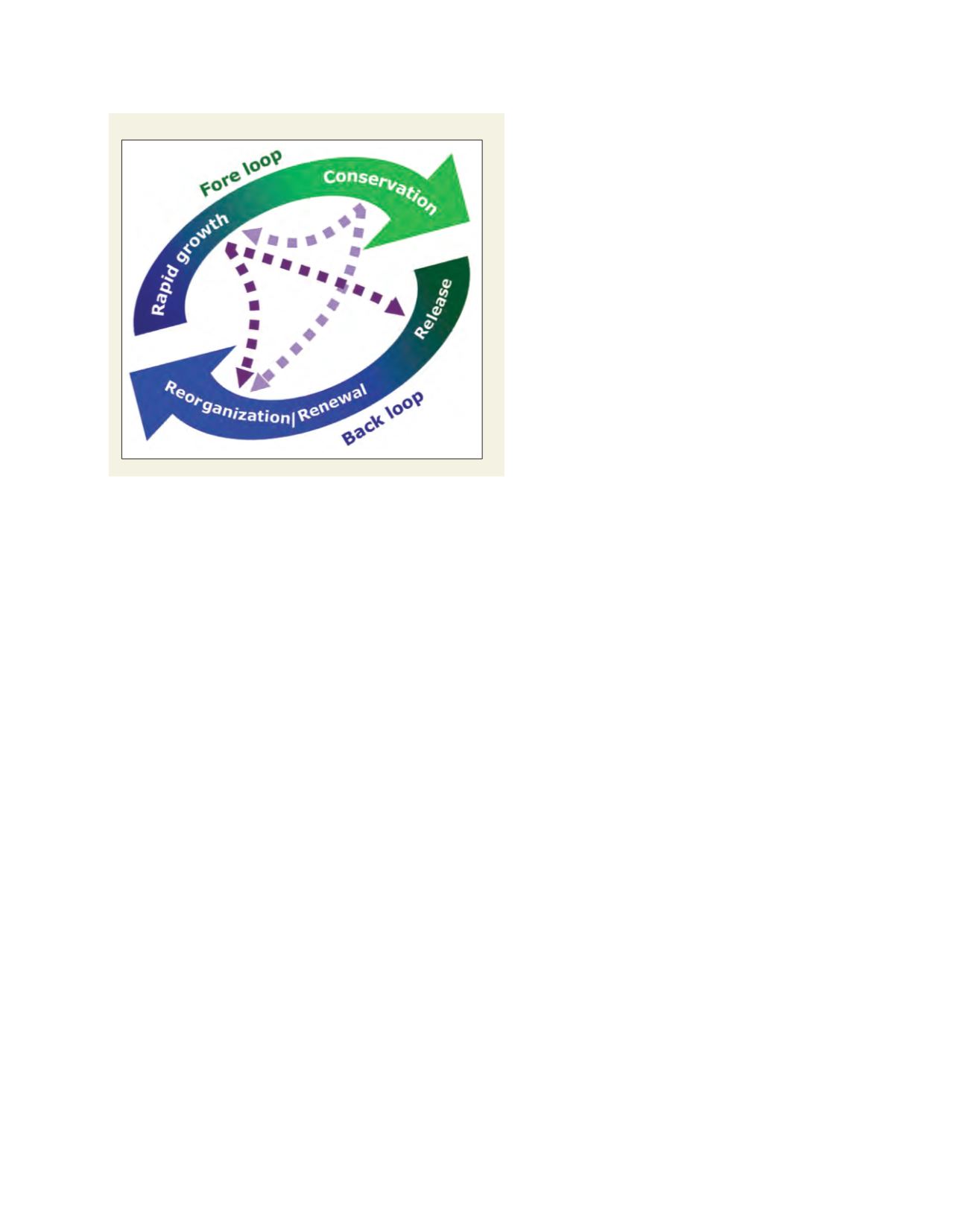

[
] 166
O
bserving
, P
redicting
and
P
rOjecting
c
limate
c
OnditiOns
of climate change, and of reducing greenhouse gas
emissions.
3
While the details are still debatable, the
main thrust of the report is clear and compelling
– the expected benefits of tackling climate change
surpass the expected costs. The question is no longer
whether we can afford to act, but whether we can
afford not to. And yet, with less than six months to
go to Copenhagen and little communal action, most
countries are hesitant to move forward.
Lance Gunderson and C.S. Holling condensed the
major obstacles to sustainability into the lack of three
basic categories: understanding of the dynamics of
complex systems; willingness to implement; and capac-
ity to perform the actions and changes needed.
4
The
pursuit of services linking climate information with
management and adaptation towards sustainability pose
new challenges to the ways we define problems, identify
solutions and implement actions.
Resilience thinking
C. S. Holling and his colleagues offer a new paradigm, the
idea of resilience as a potential organizing concept and
scoping device for understanding andmanaging our social-
ecological systems.
5
They define resilience as the amount of
change a system can undergo before it crosses a threshold
and flips to an alternate stability regime of that system. In
resilience thinking, three main concepts need to be recog-
nized. Firstly, complex adaptive systems are self-organizing.
Secondly, these systems are non-linear in their trajectories of
change, which leads to their potential for alternative stability
regimes. Third, and finally, such systems go through adap-
tive cycles that describe a repeated process of four phases:
rapid growth (r), conservation (K), release (Ω), and reor-
ganization and renewal (
α
).
6
During the r phase resources are readily available
and species or actors exploit niches and opportunities.
During the K phase, resources become increasingly
locked up and the system becomes less flexible and
responsive to disturbance. When the Ω phase is reached
disturbance causes a chaotic unravelling and release
of resources. In
α
phase, system boundaries become
tenuous. New species, actors, and ideas can take hold,
and generally lead into another r phase. Taken as a
whole, the r to K transition is referred to as a fore (or
development) loop, whereas the Ω to
α
transition is
referred to as a back loop. Most systems move through
this sequence of phases, but other transitions are
possible. The back loop, characterized by uncertainty,
novelty, and experimentation, is the transition time of
greatest potential for the initiation of either creative or
destructive change in the system.
Resilience thinking captures the dynamic nature of
the world. It recognizes the dangers of optimizing for
particular states or products of a system, and explains
why current approaches to managing resources are
failing. It focuses on how the system changes and copes
with disturbances, not only anticipating and respond-
ing but also creating and shaping them. Successful
management and adaptation for social-ecological
These definitions make clear that sustainability is not an end
product but a dynamic process that requires adaptive capacity
for social and ecological systems to deal with change. Here, a
dynamic process features the relationships between the motion
(towards sustainability) and properties of a complex system,
(social and ecological systems) and the forces (climate vari-
ability and change) acting on it. When considering the earth
climate system, a complex social-ecological system, it is impor-
tant to consider it as a whole. This ‘human-in-ecosystems’ (not
human-and-ecosystems) perspective is a way to think about the
relationship between nature and society and all the interfaces
between the two.
1
Worldview and global trajectory
Worldview is a term taken from the German weltanschauung,
meaning ‘look onto the world’. It refers to the framework through
which an individual interprets the world and interacts in it. It is
communal in scope and structure, and provides a view by which
the world can be ordered and illumined. A diversity of worldviews
linked to cultural diversity and evolution provides social-ecological
systems with the ability to persist in the face of change. Such social
and ecological memory bridges the values and truths of a society
and the social-ecological environment. In opposition, modern belief
systems and institutional frameworks seem to create homogenized
and optimized social-ecological systems. Such systems lack diversity
and the capacity to adapt to change and crisis, thereby creating their
own vulnerability.
The consideration of worldviews naturally leads us to another
important question of global trajectory, namely, whether
humanity at the global scale is currently on a sustainable or
unsustainable path. As was pointed out by the global think
tank ‘the Club of Rome’ almost four decades ago, the current
global trajectory is unsustainable for both ecological and social
systems.
2
More recently, the Stern Review of the Economics of
Climate Change provided rigorous analysis of the costs and risks
A simple representation and variants of the adaptive cycle
Source: Adapted from Walker and Salt (2006)
















